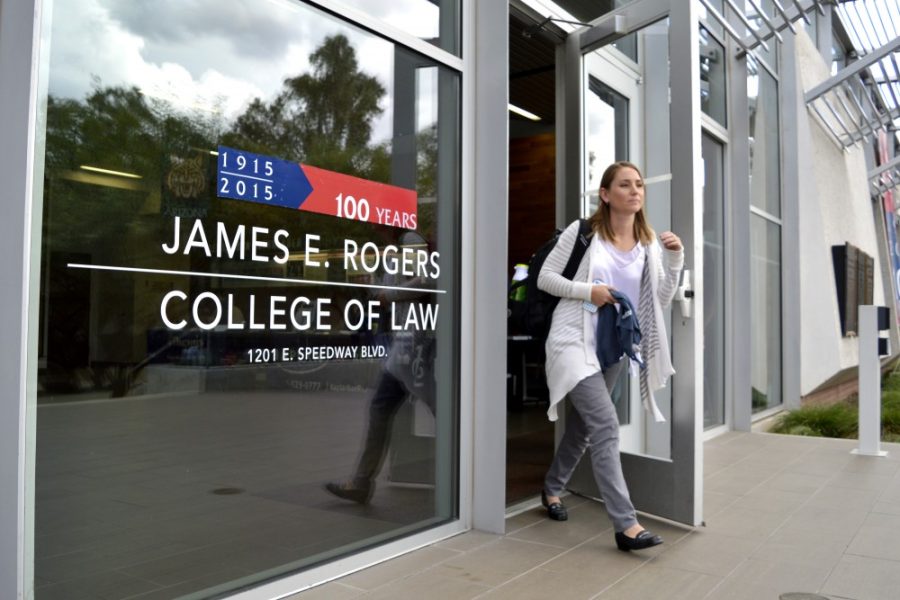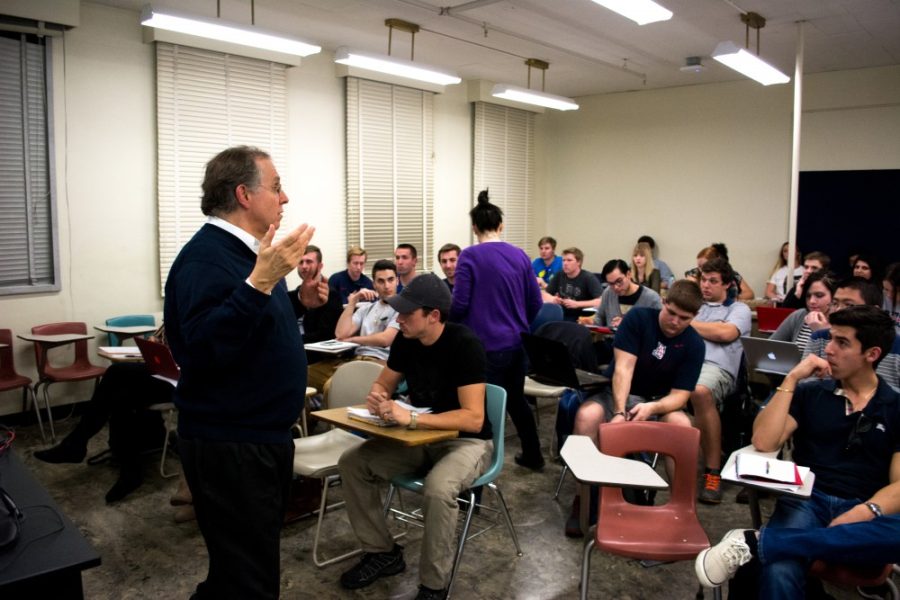Arizona’s Supreme Court justices will convene at the UA James E. Rogers College of Law on Nov. 10.
Room 164 will hold two oral arguments open to the public. The event is part of a statewide public education effort and something the Arizona Supreme Court has been doing for decades.
“I got here in ’89 and they’ve been here every year,” said Toni Massaro, a UA professor of constitutional law and dean emeritus.
The oral arguments will take place in 40-minute segments beginning at 2 p.m. and 2:45 p.m. The first case, State of Arizona v. Joseph Javier Romero, began as a murder trial that led to the conviction of Romero for first-degree murder.
Romero appealed to the courts and was able to have another trial. However, Romero’s proposed expert, experimental psychologist Dr. Ralph Haber, had his authority to provide an expert testimony questioned and denied in court on the basis that he was not qualified to challenge the state’s firearms expert. Nevertheless, the second trial resulted in the reduction of Romero’s conviction to second-degree murder.
Now, Romero has appealed to the Supreme Court, saying that his gun expert should never have been precluded from the second trial.
The second court case, Jackie Abbott et al. v. Banner Health Network et al., involves a suit that was brought against the hospital by patients who felt it was taking part in balanced billing.
Balanced billing is when a health care provider charges an amount in excess of what is reimbursable under the given health insurance plan.
The court of appeals ruled against the hospital, but the hospital appealed to the Supreme Court, saying that the money it charged patients was lawful.
The oral arguments involve a back and forth between the lawyers and the justices, giving students a chance to see how the justices carry themselves in court and interact with the lawyers. The petitioner and responder will be given roughly an equal amount of time to talk.
Since the lawyers submit their written arguments in advance, the oral arguments serve as a time for the justices to ask the lawyers any remaining questions.
“The point of oral arguments is to give the lawyers a chance to answer any questions that the justices have, so it’s less important that they talk the whole time than that they listen closely to what the justices are worried about,” Massaro said.
According to Massaro, the benefit of students getting to watch live court proceedings is enormous.
“They get to see up front and close the members of the highest court, the Arizona Supreme Court,” Massaro said. “Later on this semester, the appellate court below them will be here, so they get to see who [those] justices are.”
Students will also get a chance to interact with the justices. After the second oral argument, justices will take questions from the audience for about 20 minutes. Questions must be general and cannot pertain to pending cases.
The Rehnquist Center recommends those interested in attending the event RSVP on its website, as seating can fill up. The proceedings can also be streamed live online via the Arizona Supreme Court website.
Those who plan on attending in person should dress appropriately. No headgear or flip-flops, according to Massaro, who added that students should aim for business casual.
Follow Michelle Jaquette on Twitter.









